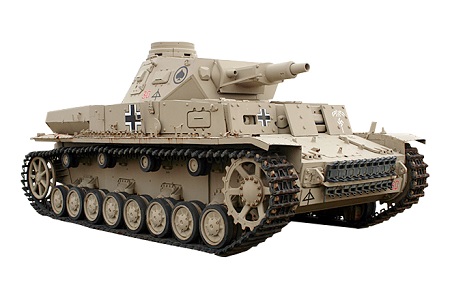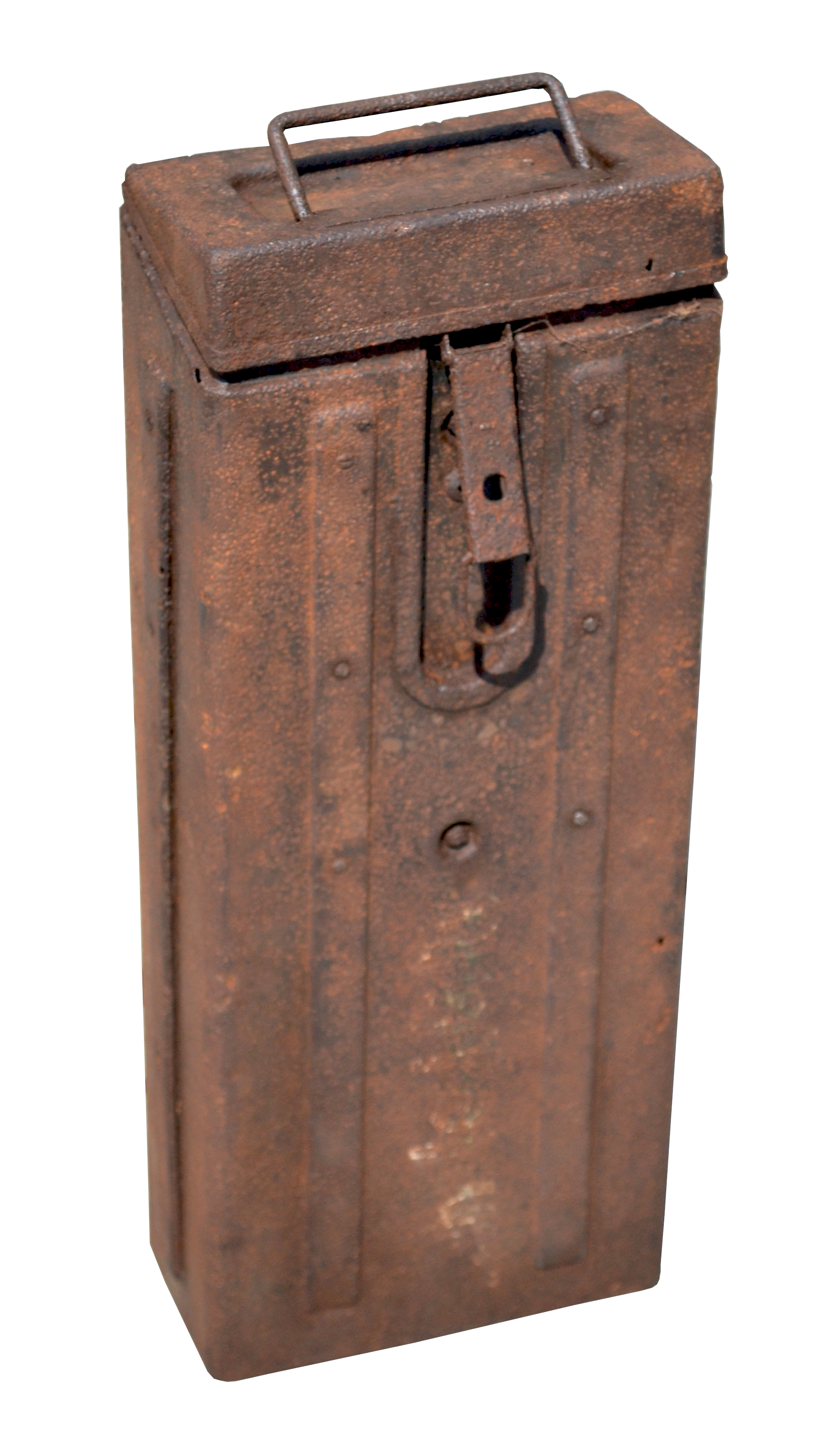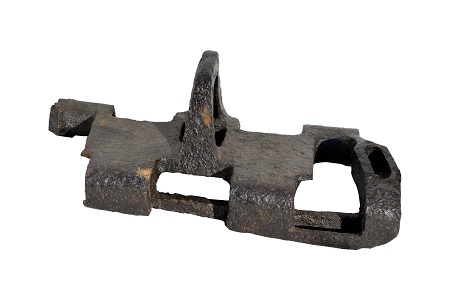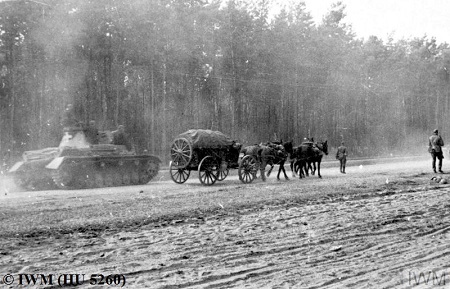
Accepted into service as the Versuchskraftfahrzeug 622 (Vs.Kfz. 622), production began in 1936 at Fried. Krupp Grusonwerk AG factory. The first mass-produced version of the Panzer IV was the Ausführung A (abbreviated to Ausf. A, meaning "Variant A"), in 1936. It was powered by Maybach's HL 108TR, with five forward gears and one reverse, with a maximum road speed of 31 kilometres per hour. The main armament was a 75 mm tank gun with a range of up to 700 metres (2,300 ft). An MG 34 was mounted coaxially with the main gun in the turret, while a second was mounted in the front plate of the hull.

Ammunition Box for Two Rounds for the Short Barrelled Panzer IV.
The Ausf. A was protected by 14.5 mm of steel armour on the front plate of the chassis, and 20 mm on the turret this was only capable of stopping artillery fragments, small-arms fire, and light anti-tank projectiles. The Panzer IV was upgraded over the years, until August 1939, when production was changed to the Ausf. D; in this variant, of which 248 vehicles were produced, protection was upgraded, this time by increasing side armour to 20 mm (0.79 in). As the German invasion of Poland in September 1939 came to an end, it was decided to scale up production of the Panzer IV, which was adopted for general use on 27 September 1939.

When Germany invaded Poland on 1 September 1939, its armoured corps was composed of 1,445 Panzer Is, 1,223 Panzer IIs, 98 Panzer IIIs and 211 Panzer IVs (the latter representing 10% of Germany's armoured strength). Although the Polish army possessed fewer than 200 tanks capable of penetrating the German light tanks, Polish anti-tank guns proved more of a threat.

Despite increased production of the medium Panzer IIIs and IVs prior to the German invasion of France on 10 May 1940, the majority of German tanks were still light types. The Wehrmacht invaded France with 523 Panzer Is, 955 Panzer IIs, 349 Panzer IIIs, 278 Panzer IVs, 106 Panzer 35(t)s and 228 Panzer 38(t)s. Through the use of radios and superior tactics, the Germans were able to outmanoeuvre and defeat French and British armour. However, Panzer IVs armed with the 75 mm tank gun found it difficult to engage the superiorly-armoured French tanks such as the Somua S35 and Char B1. The Somua S35 had a maximum armour thickness of 55 mm, whereas the Panzer IV's main gun could only penetrate 43 mm at a range of 700 metres. The British Matilda II was also heavily armoured, with at least 70 mm of steel on the front and turret, and a minimum of 65 mm on the sides, but were few in number. Shown here are a Panzer IV and a section of track.
Back
.
